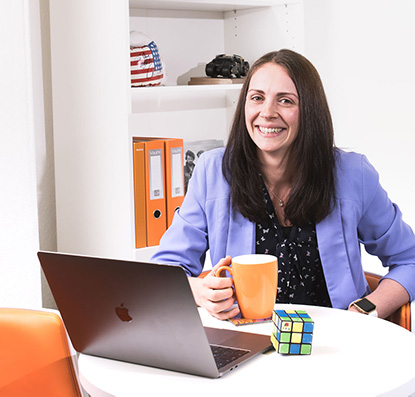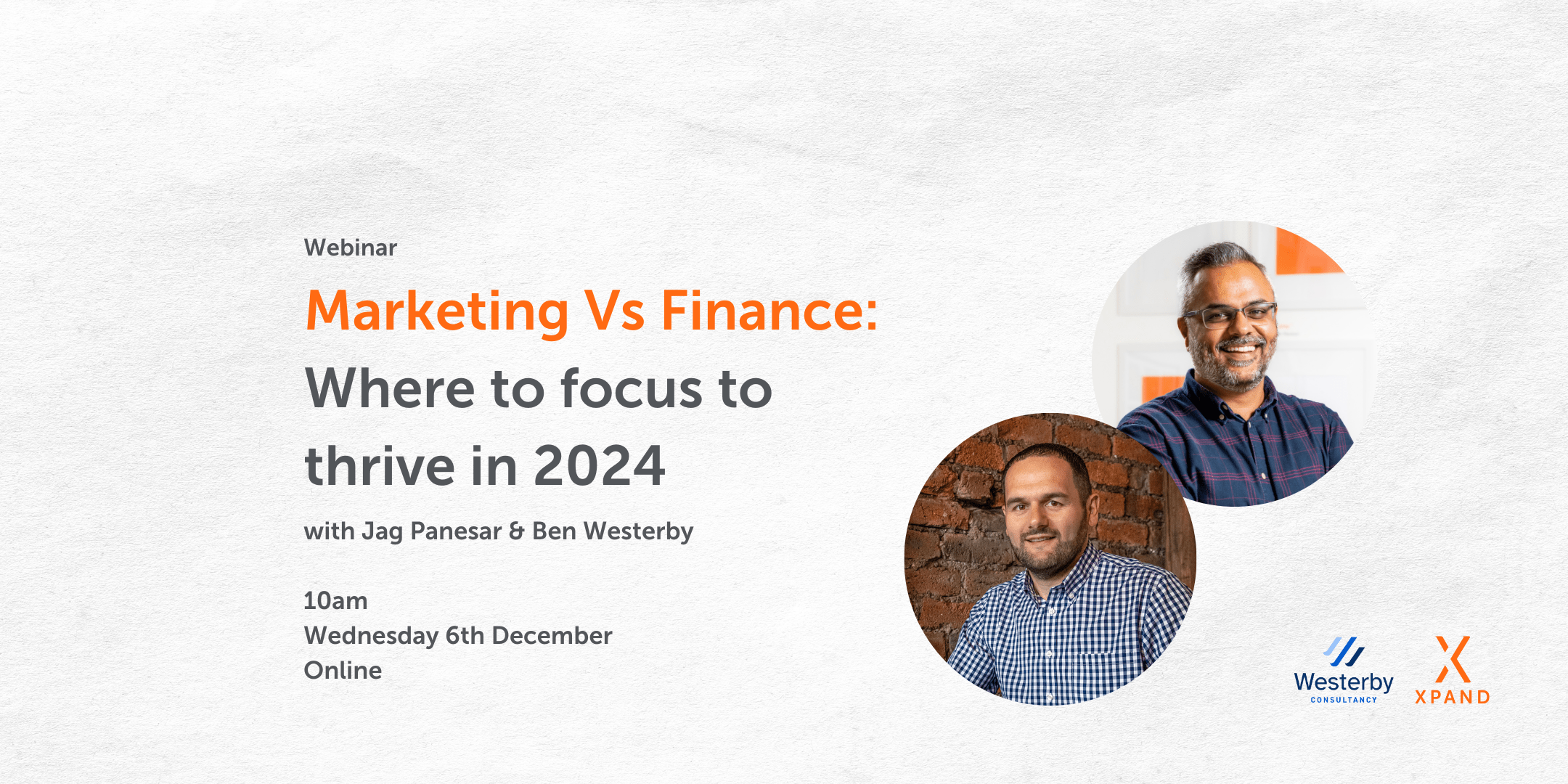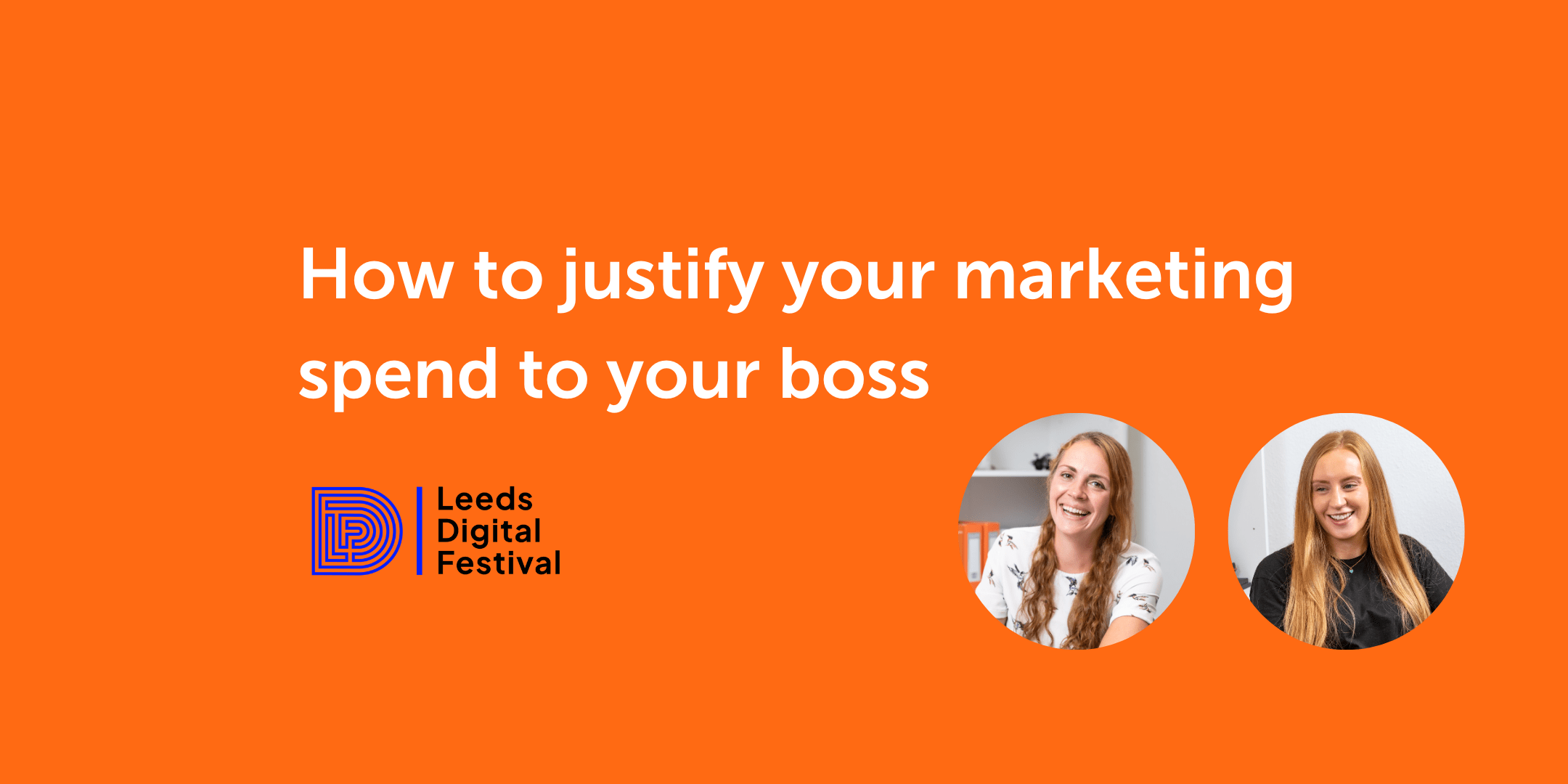Paid advertising can be a minefield. From creating the content to knowing who to target, it's hard to know where to start. In this webinar, Danni Johnson discusses why running paid social media ads is important, and the common mistakes to avoid.
Did you know that last year there was a 40% rise in the number of people using social media daily?
A lot of this is to do with Covid forcing people and businesses to become more alive and present in the digital world. If you think of the older generation, they’re now being pushed to social media and online to make purchases, something they might not have done before. For example, Amazon has seen a huge rise in usage over the lockdown period because their model allows for convenient online purchasing.
In this webinar, we covered:
- Why you should consider running paid social media campaigns
- Some of the most common mistakes made with social ads and how to overcome them
- A few recommendations for people starting out
- A couple of great brand examples and a look at why they are working
Why should you consider running paid social campaigns?
- To raise brand awareness
- The targeting capabilities
- To drive traffic to your website
If you do it right, it gives you a return on investment.
There are plenty more reasons why you should consider running an ad campaign, but for the purposes of this webinar, we’ll stick to the three above.
Arguably the most important reason for running ads is their targeting capabilities. With organic social media, there’s a limit to how many people you can reach and who you can reach.
The targeting capabilities on these platforms are amazing. You can pinpoint very specific details about a person when creating your ad, to give you the best chance of reaching your audience. This is something that you can’t do with organic social media, so if you’re struggling to reach your ideal audience, this is a great reason for you to run paid ads.
In terms of ROI (return on investment), you’re always going to see a return on your investment using paid advertising if you’re doing it right.
The most common mistakes when running ads and how to overcome them
1. A lack of planning
Someone once said to me “A goal without a plan is just a wish”, and that resonated with me. It makes complete sense.
People often say to me that paid advertising is too expensive, but is it really? I find that the real issue is usually down to a lack of planning. So, when you start running paid ads, the first thing you need to do is build a strategy and consider the following:
- What is the objective?
- What will you track?
- Which platform will you use?
- Do you have an established following?
- Do you understand what you are doing?
- Have you planned in time to assess and evaluate your ads?
- Have you looked at your competitors’ content for inspiration?
You also need to build your target audience. And to do this, you need to have a good understanding of who your audience is in the first place. You can do this by creating an audience persona.
Make sure you’re using your data. People often forget this, but you have access to a wealth of data on your Google Analytics which is full of information about your audience.
You also need to make sure that you’re checking your organic analytics. You’ll already have access to data that indicates which content works well for your followers, which you can use as a good indicator of where to start when trying to run ads for the first time.
We get some clients coming to us asking if they should run paid ads for a brand new page. Generally speaking, we’d say no. You don’t want people going from your ads to an incomplete page, they’re unlikely to stick around for long if this is the case.
2. They don’t consider the sales funnel
You wouldn’t propose on a first date, would you? Or at least, you shouldn’t. We consider the principles of paid advertising to be the same. When you’re thinking about the sales funnel, you want to aim to build awareness of your brand first, because taking the ‘sell, sell, sell’ approach won’t work with cold customers who haven’t heard of your brand.
Think about it, if you’re sat scrolling through social media and you see an ad from a brand you’ve never heard of that is trying to sell to you, you’re unlikely to engage with it. You need to work your customers down the funnel gently by using awareness ads first, such as case studies, user-generated content, and company intro videos. These are the standard advertising methods I would use alongside other methods too. You can also use your organic content to help with that as well.
Quick tip
Retargeting ads are great for reaching customers who have already interacted with your website. These are great for abandoned basket customers. You should consider offering a promo to these audiences.
3. They use the wrong ad type
The ad you choose depends on your goal. The platforms are usually quite good at suggesting which you should use, but this is just something for you to be mindful of. This can become a minefield for someone who doesn’t understand the platforms. Every day something is changing on social media, and we know it’s extremely time-consuming to keep on top of.
There are so many different ad options on each platform, which is why I say that ads can quickly amount to a lot of money. If you’re testing the water trying different ad types because you’re unsure, the cost is going to rise pretty quickly.
The ad types available are:
- Static image ads
- Video ads
- Carousel (collection) ads
- Story ads
- Lead ads
- Messenger ads
There is an extensive list, but these are the main ones that cover all of the platforms.
Example: If you’re a business looking to build awareness of your new product, a video ad or story ad would be a good option. Unless you’re using a retargeting method to existing customers for a free trial as this could work better as a lead.
Quick tip
Be mindful of using video ads if your audience is mainly on mobile. Think about vertical viewing and how your video will look when it’s amended from landscape. To avoid this, you could use the square option.
4. They don’t consider aesthetics
People make up their minds within the first 30 seconds of their first interaction with a person or a product. About 62-90% base their assessment on colours alone and smiling faces evoke positive feelings. This indicates that the content of your ad alone isn’t enough to engage someone, you need to consider its layout, readability and any imagery you use, to name a few.
Gone are the days when ads look like ads, the focus is now on how the ad blends into the feed. The ‘sell, sell, sell’ approach doesn’t resonate well with customers anymore because naturally, as humans, we don’t like being sold to. So, the better your ad blends into the newsfeed, the more likely your customer is to engage with it.
You also need to consider how you’re going to stop the scroll. This boils down to the appearance of the ad, have you designed it in a way that will make your customer stop and read it? The amount of content being pushed out is increasing so you must consider this factor to stand out from the noise.
It’s also important to note that when you’re using stock images, you need to make sure that it is both relevant to you and the offer in the ad. There’s nothing worse than a confusing ad so try to avoid using images that have little relevance, even if you think the image is more engaging.
Quick tip
Two things to avoid- white space and the ‘see more’ message. Generally speaking, you don’t want anyone viewing your ad to have to click before they engage.
5. They ignore the landing page
If someone clicks on your ad and ends up on your website’s home page, your bounce rate will increase. I often find that brands are creating these amazing looking ads that take you to the home page or a completely irrelevant page to the ad content. Think about it, people are lazy and they’re unlikely to trawl through your website to find the information they need.
So, if you’re directing the viewer to a page on your website, we’d suggest:
- It flows – don’t make them re-read everything. No one has time for that. A little repetition is fine, to reconfirm what they’ve already read, but don’t make them re-read the whole ad.
- The ad content reflected the page content.
- The landing page is a continuation of the ad’s aesthetics… Do they represent the same brand? I’ve seen examples before where a company had set up an ad for a sister company, but directed to the website of their parent company. This confusion is enough to make the viewer go elsewhere straight away. Remember you have 30 seconds to make your first impression…
- Lastly, and arguably the most important, make sure the URL is correct.
6. They don’t monitor, analyse or amend
If you fail to assess the results of your ad campaigns then your ad will fall stale. You can’t just set an ad up and leave it alone. However, in the initial weeks, the platform will start to learn and the ads do need to be left to learn about the audience. But, once this is over, you need to take control.
They all provide a demographic report so you can look at who is clicking on your ad to see what they’re doing. This might lead you to find demographics that aren’t suitable for your ad, so you might consider taking them off the targeting so you can concentrate on a smaller demographic pool. Alternatively, it could be highlighting that your call to action (CTA) isn’t strong enough. Either way, if you’re targeting people who are not interested in your ad, it’s still costing you every time someone clicks on it.
Sometimes during the testing phase, brands like to run two separate ads with slightly different content to see which works best, but forget to turn off the ad that isn’t performing as well and you’ll end up paying to have two ads running. If you’re doing this, make sure to turn off the ad that isn’t working as well after the testing phase.
You need to be tracking the data and looking at all of the analytics. Platforms are so good at giving you this information, there’s no excuse for spending unnecessary money on ads.
“In 2020, Facebook announced they had ten million active advertisers using the platform to promote their products and services, a three million increase from the previous year. So, how do you make your ads stand out from the crowd?”
Here are a few of my recommendations…
1. Use user-generated content (content that your customers have created and tagged you in).
This is important because most people trust what peers have to say about a brand or service- which is referred to as social proof. Take Trip Advisor, for example, a lot of people base their holiday choices on the feedback from others for making bookings.
Consumers are also much more likely to communicate their feelings over social media these days. This is where social listening comes in handy. If someone is communicating positively about your brand without being asked to, this will have a bigger impact than anything you could say about your brand.
Social media is the perfect channel to use user-generated content because it promotes user participation and engagement. If your brand is being seen to be sharing this content, it will influence others to post your brand on social media too.
2. Repurpose top-performing organic content
People often come to me saying they have no idea what to post or what to use, but often we find they’re trying too hard to reinvent the wheel. But, we’ve mentioned before that you should look at which organic content is performing the best and use this as a starting point for your paid advertising.
Also, if you have any evergreen posts (a promo post) which you use regularly, and you know it performs well, why don’t you try it as an advert?
On your analytics page, you’ll be able to see how your posts are doing in terms of the number of impressions and views they’re getting etc. For example, we have found that our SEO animation resonates well with our audience and performs well organically. This is an example of a post we might try as an ad, to see if we can push it out further and target even more of the right people.
Alternatively, you can use the boost or sponsored options to add a small amount of money to increase the post reach. But, the audience targeting features aren’t as good as the campaign tools offer. We would recommend using this as a testing method if you’re just starting and are wanting to ease into paid ads.
3. Always check your content
This sounds silly but so many companies make silly errors that cost them clicks, including big brands like Dove who made the news after this mishap
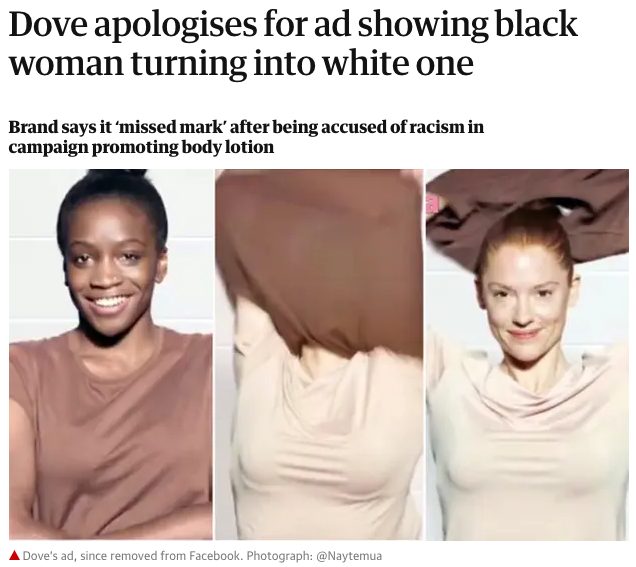
Just make sure you’re thinking about the content that is going out for your audience to see. Here are some tips:
- Good copy should be short and sweet and always adding value. The keyword here is value. We want to feel as though this potential ad could add value to us, to give us a reason for engaging with it.
- Images do need to be colourful, eye-catching and non-generic- But be mindful of how they may be misinterpreted by the user or you could draw attention for all the wrong reasons, as Dove did.
- Facebook doesn’t like lots of text in the creative. They have even said that images with less than 20% text perform better.
- Always include a CTA (call to action). Don’t leave your audience wondering what you want them to do with the ad.
4. Organic and paid content should work together and complement each other.
Going back to the question, “Is organic reach dead?” nobody really knows. I’ve personally just taken the stance that there are ways you can make your organic content better. One of the ways to do this is to run paid ads alongside your organic content. Even if organic isn’t what it used to be, it’s not going away so your strategy must incorporate both.
Here is a Venn diagram to show you how they can work together:
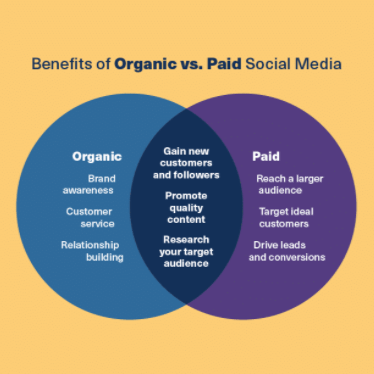
If you’re paying for advertising but not backing up the advert with some credibility building through your followers- you’re missing a huge opportunity. You could compare this to handing out a leaflet for your new shop opening, but having nothing on the shelves when they come- it’s not going to have the same effect.
Let me show you what I mean:
They work their paid advertising and their organic together really well. The organic (on the left) serves as shareable, non-promo content that their customers will be more inclined to share across their news feed. This is something to be mindful of when creating your organic content. Think “is this content something your customers would be inclined to share across their social media, to put this out in front of people they engage with?”
The one on the right (the paid ad) serves to promo the product with a strong CTA. These two pieces of content are working together to direct the customer through the funnel.
Let‘s look at some example ads…
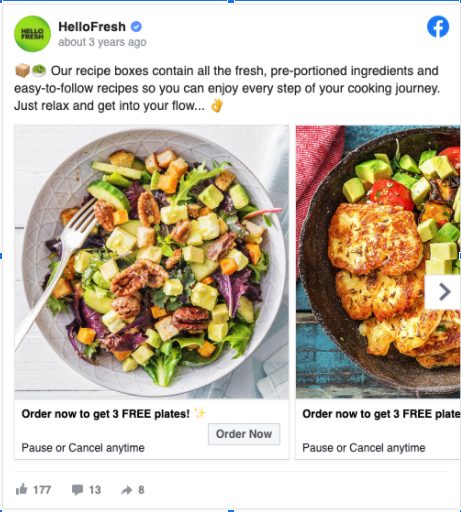
This highlights variety. If this is a selling point for your brand, the carousel format will help to showcase this. Hello Fresh is using this format to show four different meals. They have also used very appetising imagery. When dealing with a product like food, good quality images are a great way of making people hungry for more (quite literally).
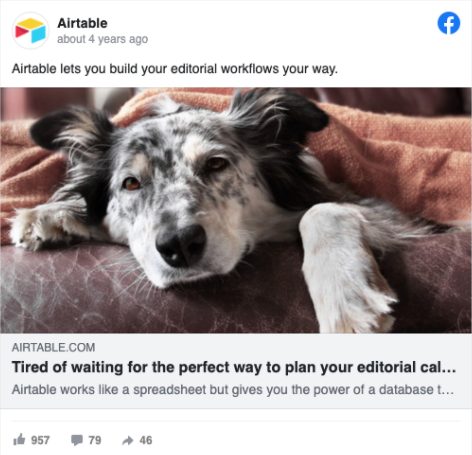
They have used short straightforward copy and within 21 words they have described their major value proposition and engaged viewers with a question. Again, they have used an eye-catching image. However, although this image might stop the scroll for many, it has no relevance to software and there’s a fine line between using cute puppy images to express the mood of your brand and misleading viewers with clickbait. Don’t fall into the trap of producing clickbait ads; they won’t be successful. When you click this ad, it takes you to a landing page that describes the product and why it’s valuable. This ad is a good reminder that you don’t have to say everything in your ad, you just need to say enough to get them to click through the landing page to learn more.
To summarise
- Social media advertising can raise awareness, increase sales and convert customers into brand advocates when it’s done right.
- Social advertising allows businesses to find their ideal audience and target them directly with relevant messages, and create conversations that appeal to them.
- And just a little tip, check out our audience persona downloadable below to help you to create your advertising. You need to have this understanding before you can make any targeting decisions, or you risk running ads to the wrong audience.
We hope that this webinar has given you some good insight into running your own paid ads. If you’re looking for further assistance on your paid advertising, get in touch with one of our team members, we’re always happy to help.
